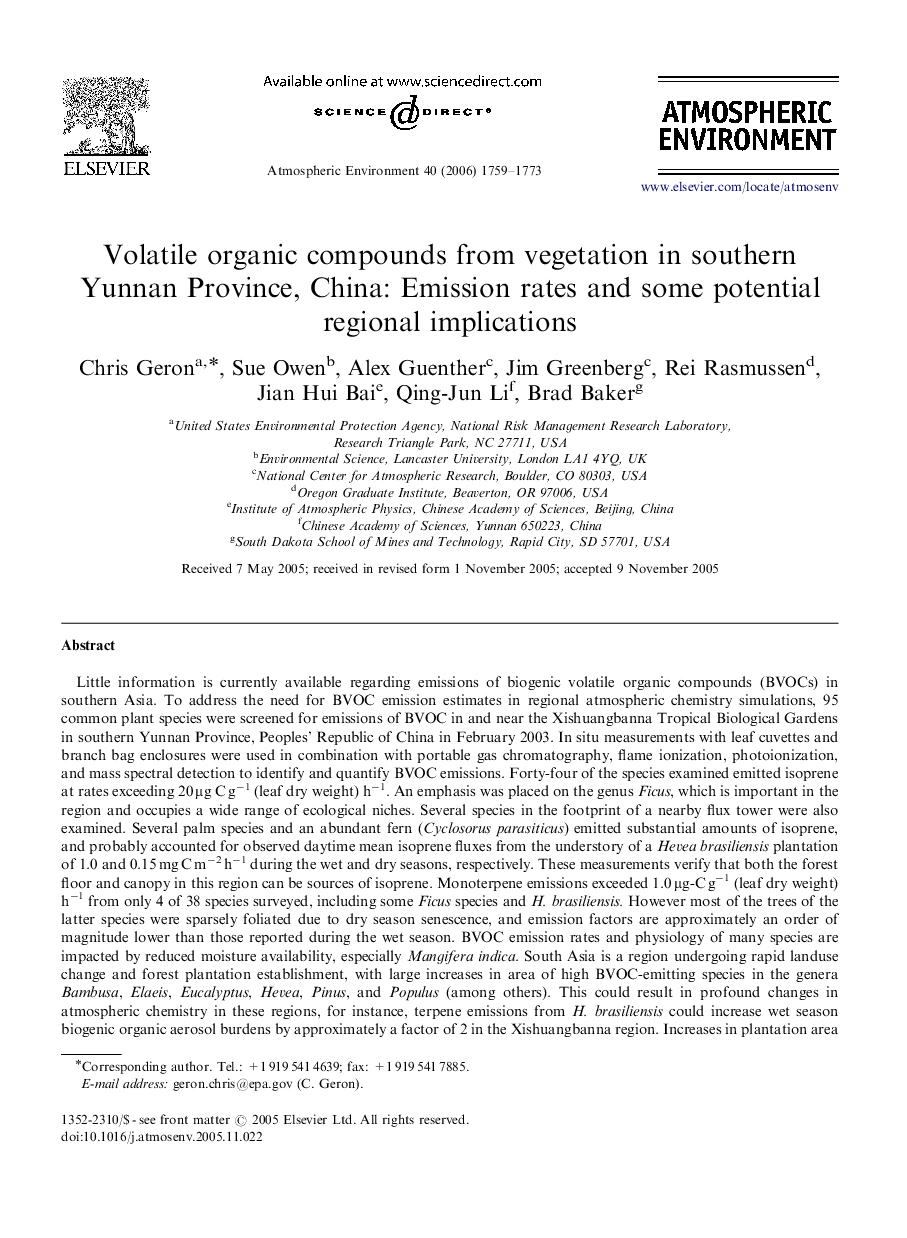| کد مقاله | کد نشریه | سال انتشار | مقاله انگلیسی | نسخه تمام متن |
|---|---|---|---|---|
| 4444249 | 1311231 | 2006 | 15 صفحه PDF | دانلود رایگان |

Little information is currently available regarding emissions of biogenic volatile organic compounds (BVOCs) in southern Asia. To address the need for BVOC emission estimates in regional atmospheric chemistry simulations, 95 common plant species were screened for emissions of BVOC in and near the Xishuangbanna Tropical Biological Gardens in southern Yunnan Province, Peoples’ Republic of China in February 2003. In situ measurements with leaf cuvettes and branch bag enclosures were used in combination with portable gas chromatography, flame ionization, photoionization, and mass spectral detection to identify and quantify BVOC emissions. Forty-four of the species examined emitted isoprene at rates exceeding 20 μg C g−1 (leaf dry weight) h−1. An emphasis was placed on the genus Ficus, which is important in the region and occupies a wide range of ecological niches. Several species in the footprint of a nearby flux tower were also examined. Several palm species and an abundant fern (Cyclosorus parasiticus) emitted substantial amounts of isoprene, and probably accounted for observed daytime mean isoprene fluxes from the understory of a Hevea brasiliensis plantation of 1.0 and 0.15 mg C m−2 h−1 during the wet and dry seasons, respectively. These measurements verify that both the forest floor and canopy in this region can be sources of isoprene. Monoterpene emissions exceeded 1.0 μg-C g−1 (leaf dry weight) h−1 from only 4 of 38 species surveyed, including some Ficus species and H. brasiliensis. However most of the trees of the latter species were sparsely foliated due to dry season senescence, and emission factors are approximately an order of magnitude lower than those reported during the wet season. BVOC emission rates and physiology of many species are impacted by reduced moisture availability, especially Mangifera indica. South Asia is a region undergoing rapid landuse change and forest plantation establishment, with large increases in area of high BVOC-emitting species in the genera Bambusa, Elaeis, Eucalyptus, Hevea, Pinus, and Populus (among others). This could result in profound changes in atmospheric chemistry in these regions, for instance, terpene emissions from H. brasiliensis could increase wet season biogenic organic aerosol burdens by approximately a factor of 2 in the Xishuangbanna region. Increases in plantation area established with high isoprene emitting species, (e.g. Bambusa spp. and Eucalyptus spp.) are also projected for China and other parts of Southeast Asia in the near future. Thus, landcover change in South Asian landscapes is usually associated with large increases in BVOC flux with the potential to alter the atmospheric chemical composition and air quality over this rapidly developing region.
Journal: Atmospheric Environment - Volume 40, Issue 10, March 2006, Pages 1759–1773